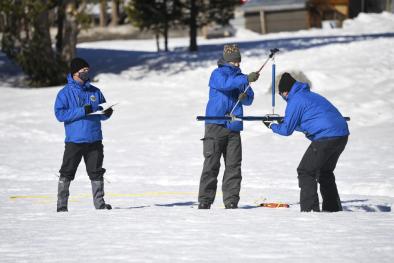Science Source
Climate change impact on the roles of temperature and precipitation in western U.S. snowpack variability
- Evaluates climate change impact on the roles of temperature and precipitation in spring snowpack (S) variability across the western United States
- States that there is historically a range of threshold elevations (1580–2181 m) across six mountainous regions, above which precipitation is the main driver of snowpack variability and below which temperature is the main driver
- Finds that under a moderate end-of-century climate change scenario, these thresholds increase by 191 to 432 m
- Results suggest increasing spatial and elevational vulnerability of western U.S. spring snowpack along with associated impacts to hydrologic and ecologic systems
Related Content
Headline

Feb 2, 2022 | AP
Dry January means less water than normal in California snow
Headline

Jan 25, 2022 | Climate Nexus Hot News
Air Pollution, Lack Of Snow, Hang Over Winter Olympics
Headline

Dec 21, 2021 | High Country News
Winter without snow is coming
Science Source
| Proceedings of the National Academy of Sciences
Global snow drought hot spots and characteristics
Huning and AghaKouchak


